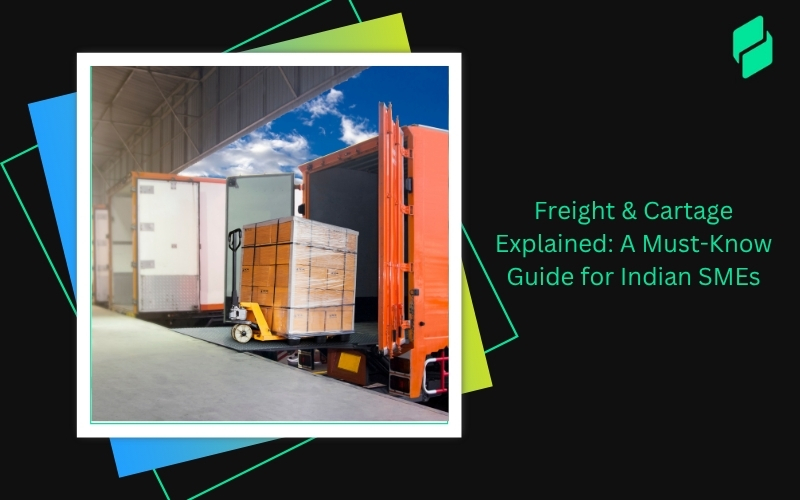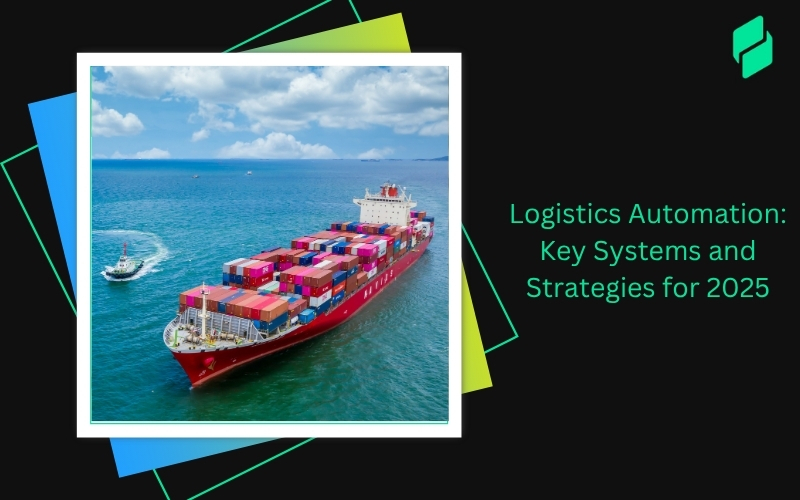Optimize your business: use unlimited savings with Pazago fulfilled now!
Get Started ->Did you know the global chemical logistics market was valued at approximately USD 255.8 billion in 2023 and is set to grow at over 3% CAGR in the coming years? India, one of the world’s largest chemical producers, plays a crucial role in this expansion. However, complex supply chains, regulatory challenges, and infrastructure constraints make efficient logistics a constant struggle for Indian exporters.
For businesses handling chemicals, the right logistics strategy isn't just about cost savings. It determines supply chain reliability, compliance, and safety. A single disruption can cause delays, regulatory fines, or even safety hazards.
This blog will analyze the trends, regional strengths, key challenges, and future opportunities shaping India's chemical logistics market. Read on to discover how businesses can stay competitive while ensuring smooth and compliant operations.
India’s Role in the Global Chemical Logistics Market

India ranks among the top six chemical producers globally, with an industry valued at over $220 billion. The sector's growth is expected to double by 2025, fueled by growing exports, domestic demand, and increased foreign investment. However, moving chemicals, especially hazardous materials, requires specialized handling, strict compliance, and efficient coordination across supply chains.
How India Contributes to the Global Chemical Industry
India exports chemicals to more than 175 countries, making it a vital player in the global supply chain. Key categories include petrochemicals, agrochemicals, specialty chemicals, and bulk chemicals.
- Specialty chemicals account for nearly 22% of total exports, driven by industries such as pharmaceuticals, textiles, and food processing.
- Bulk chemicals, including polymers and industrial gases, see steady demand across Asia, Europe, and the US.
- Agrochemicals, such as fertilizers and pesticides, position India as a major supplier for global agriculture markets.
While India plays a major role in the global chemical trade, not all regions contribute equally. Some states have built strong logistics networks, giving businesses a competitive edge. Let’s explore where the key hubs are and why they matter.
Also Read: Supply Chain & Freight Shipping Logistics Services in India
Regional Insights: India’s Chemical Logistics Hubs

India’s chemical industry isn’t spread evenly across the country. Certain states dominate production and exports, while others act as key logistics hubs due to their port infrastructure, warehousing facilities, and regulatory efficiency. Businesses that align their supply chains with these hubs can reduce transit times, lower costs, and improve overall efficiency.
- Gujarat
Gujarat accounts for nearly 41% of India’s chemical exports, making it the undisputed leader in the sector. The state’s refineries, petrochemical plants, and special economic zones (SEZs) give manufacturers a strong advantage.
Key logistics strengths:
- Major ports: Mundra and Kandla handle a significant share of India’s chemical cargo.
- Dedicated chemical clusters: Dahej and Ankleshwar serve as specialized industrial zones.
- Strong connectivity: Road and rail networks allow quick movement of goods.
Many global chemical firms have set up bases in Gujarat because of the ease of doing business and robust infrastructure.
- Maharashtra
Maharashtra plays a critical role in chemical warehousing and distribution. The state has a strong industrial base and is home to several multinational chemical firms.
Key logistics strengths:
- Nhava Sheva (JNPT): India’s busiest container port, handling a large portion of chemical shipments.
- Warehousing hubs: Bhiwandi and Taloja serve as major distribution centers.
- Access to major markets: Proximity to large manufacturing bases in Pune and Mumbai.
For companies moving chemicals to and from western markets, Maharashtra’s logistics network ensures faster clearance and distribution.
- Emerging Hubs in South India
While Gujarat and Maharashtra dominate, southern states are catching up with new investments in chemical logistics.
- Tamil Nadu: Chennai Port and Ennore Port are seeing increased chemical cargo traffic.
- Andhra Pradesh: The Visakhapatnam-Chennai Industrial Corridor is attracting chemical manufacturers.
- Karnataka: Bengaluru is emerging as a hub for specialty chemical R&D and exports.
While some states offer great logistics support, there are still challenges that impact the industry nationwide.
Also Read: Top 10 Import And Export Companies In Mumbai
Challenges Faced by Indian Stakeholders

Despite India’s strong chemical production and growing export market, logistics remains one of the biggest challenges for businesses. From complex regulations to infrastructure gaps, exporters face multiple hurdles that can lead to delays, increased costs, and compliance risks.
- Regulatory Hurdles and Compliance Issues
The movement of chemicals is subject to strict domestic and international regulations, requiring special permits, safety documentation, and environmental clearances.
- Hazardous chemicals (HAZMAT) require special approvals, which can take weeks to obtain due to bureaucratic red tape.
- Labeling and packaging requirements differ by country, leading to shipment rejections or penalties if exporters fail to meet standards.
- Customs clearance delays at Indian ports slow down movement, especially for chemicals flagged as “high risk.”
- Infrastructure Constraints Slowing Progress
While major ports like Mundra, JNPT, and Chennai handle a significant volume of chemical cargo, several infrastructure gaps continue to affect efficiency.
- Limited dedicated chemical terminals lead to delays in loading and unloading at ports.
- Poor last-mile connectivity increases transit times, especially in landlocked states.
- Inadequate warehousing and storage facilities make maintaining safety standards for sensitive chemicals difficult.
- Safety Concerns and Their Implications
Chemical logistics comes with high risks, including accidental spills, leaks, and hazardous exposure. Without proper training and safety protocols, businesses risk financial losses, legal action, and reputational damage.
- Freight carriers often lack training in handling hazardous chemicals.
- Poor enforcement of safety regulations leads to accidents and non-compliance penalties.
- Inconsistent road transport standards make movement across states challenging.
These challenges create constant obstacles for Indian exporters, but solutions exist. In the next section, we’ll discuss practical strategies businesses can use to minimize risks and improve efficiency.
Also Read: Key Challenges and Solutions in Supply Chain Management
Strategies for Handling Chemical Logistics Challenges

India’s chemical industry is growing rapidly, but logistics inefficiencies continue to hurt businesses. The good news is that companies can overcome these challenges by adopting smarter logistics strategies that improve compliance, reduce delays, and enhance supply chain efficiency. Here’s how.
- Better Documentation and Processes
Many delays in chemical shipments occur due to missing or incomplete paperwork. Businesses can avoid customs holds and regulatory fines by ensuring all required documentation is in place before dispatch.
- Automate documentation: Using digital platforms to generate shipping labels, MSDS, and compliance reports reduces human errors.
- Pre-clear shipments: Working with customs brokers to handle paperwork in advance can prevent unnecessary delays.
- Stay updated on regulations: International compliance standards change frequently. Keeping track of changing norms, especially in the EU and US markets, helps avoid shipment rejections.
- Investing in Better Warehousing and Cold Storage Solutions
Many chemicals require temperature-controlled storage or specialized handling. Investing in dedicated warehouses and partnering with third-party logistics (3PL) providers can help prevent losses.
- Use chemical-specific warehouses: Many ports now offer designated chemical storage zones with safety protocols in place.
- Implement IoT-based monitoring: Smart sensors can track temperature, humidity, and leakage risks in real time.
- Choose multimodal transport: Using a combination of road, rail, and sea transport reduces dependency on a single mode and improves efficiency.
- Partnering with Reliable Logistics Providers
Rather than relying on generic freight carriers, businesses can benefit from specialized chemical logistics companies that understand chemical handling, compliance, and safety protocols.
- Work with experienced 3PL providers: Companies like Pazago and other specialized firms provide end-to-end visibility on chemical shipments.
- Use digital tracking: GPS tracking and real-time shipment updates can help businesses plan production and deliveries more efficiently.
- Conduct safety audits: Regular checks on warehousing, packaging, and transport partners help ensure compliance with global standards.
Alongside these business-driven solutions, policy reforms are playing a key role in improving chemical logistics.
Also Read: 4 Strategies to Ensure Success in Logistics Optimization
Government Policies Shaping Chemical Logistics in India

India’s chemical logistics industry is highly regulated, and government policies play a crucial role in shaping its efficiency and growth. Several recent initiatives aim to improve infrastructure, simplify regulatory processes, and enhance safety measures for chemical transportation. Businesses that align their operations with these policies can reduce costs, improve compliance, and stay ahead in the market.
- Gati Shakti
The PM Gati Shakti National Master Plan, launched in 2021, aims to improve multimodal connectivity and logistics efficiency across industries, including chemicals.
- Dedicated Freight Corridors: The plan includes specialized rail and road networks that will help reduce transit times for chemical shipments.
- Port Modernization: Indian ports, including JNPT, Mundra, and Chennai, are being upgraded to handle higher volumes of hazardous cargo with better safety measures.
- Logistics Parks: The initiative includes modern logistics hubs with dedicated chemical storage zones, reducing the risks associated with general cargo mixing.
- PLI Schemes for the Chemical Sector
The Production-Linked Incentive (PLI) scheme, originally focused on manufacturing, has now been extended to specialty chemicals. It promotes domestic production and export growth.
- Encourages Local Chemical Production: More manufacturers are setting up plants, reducing dependence on imports.
- Boosts Investments In Supply Chain Infrastructure: Warehouses, dedicated transport routes, and safety standards are improving as a result.
- Incentivizes Green Logistics: Companies investing in eco-friendly chemical transportation get tax benefits and subsidies.
- Digitalization of Customs and Compliance Processes
To reduce delays in chemical exports and imports, India’s customs system is shifting toward digital platforms. Key initiatives include:
- Faceless Assessments: Customs clearances now happen remotely, reducing port congestion.
- E-Sanchit Portal: Businesses can submit all documentation digitally, cutting processing times by days.
- RFID-based Cargo Tracking: Ports now use real-time tracking to monitor chemical shipments and ensure regulatory compliance.
While these policies aim to improve logistics, businesses also need specialized solutions to stay competitive.
Also Read: Meaning and Objectives of EXIM Policy in Export Trade
Simplify Chemical Logistics With Pazago

Chemical exporters in India deal with rising freight costs, regulatory hurdles, and shipment delays. Pazago helps businesses move cargo efficiently with a tech-driven approach that reduces paperwork, improves tracking, and simplifies coordination.
- Easy Freight Booking at Competitive Rates: Pazago allows businesses to compare multiple logistics providers, access the best rates, and book shipments quickly.
- Faster Documentation: Missing or incorrect paperwork often causes shipment delays and penalties. Pazago automates document management, ensuring accuracy.
- Real-Time Tracking for Full Visibility: Businesses can track shipments live, reducing uncertainty and improving decision-making. Updates on location, delays, and estimated arrival times help in better planning.
- Seamless Coordination: Managing multiple logistics partners can be time-consuming. Pazago offers a single communication platform, helping businesses resolve issues faster and manage shipments.
- Pre-Shipment Quality Checks: To prevent rejected shipments, Pazago conducts quality inspections before dispatch, ensuring that goods meet international safety and trade requirements.
- Integrated Payment and Insurance Solutions: Pazago allows businesses to process payments and secure cargo insurance in one place, reducing financial risks and transaction delays.
Conclusion
India’s chemical logistics sector is evolving rapidly, creating new opportunities for exporters. Businesses that invest in smarter logistics, adopt sustainable practices, and stay ahead of policy changes will be best positioned for growth.
Pazago offers advanced freight management, real-time tracking, and financial services, enabling companies to move chemicals more efficiently and reduce operational risks.
Cut the delays and eliminate the guesswork. See how Pazago simplifies chemical logistics for faster, safer, and more predictable deliveries. Book a demo today and take control of your supply chain.


.png)








